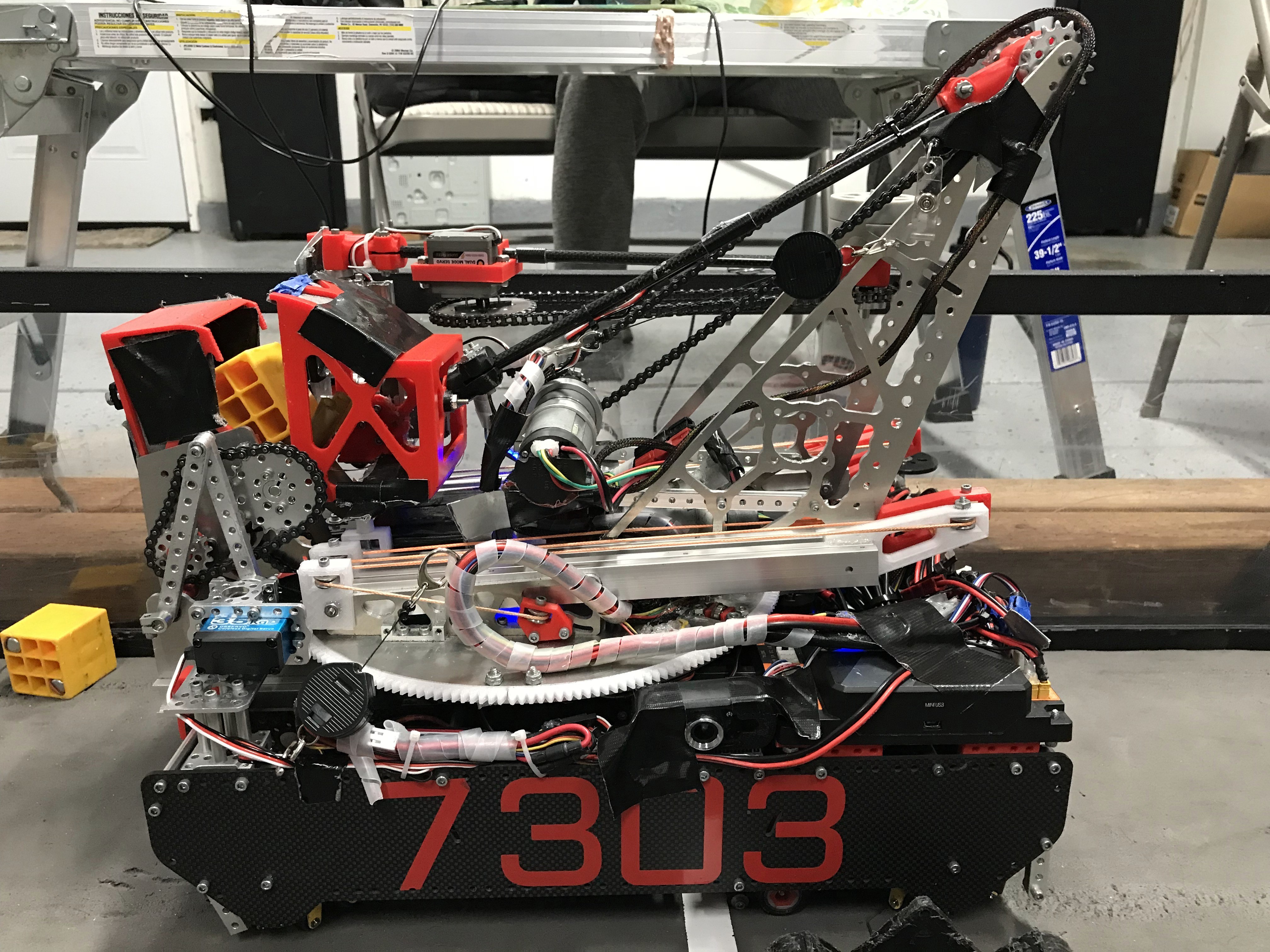FIRST Tech Challenge
Every year, I helped to program a robot that could complete various tasks both autonomously and under human control


From 2019-2022, I was a programmer on FIRST Tech Challenge (FTC) Team 7303. During my 3 years of FTC experience, I have learned various technical skills and helped my team earn multiple awards in competitions, such as winning the prestigious Maryland Tech Invitational (MTI) in 2021 (out of the top 32 teams in the world), Control Award 2nd Place at the 2022 Northern California Regionals for the most innovative software, and placing within the top 1% of the 6000 teams around the world.
Every year, the main objective of FTC was to work with my team to build and program a robot to complete in the year’s challenge, which is made up of various tasks the robot needs to be able to preform both autonomously and under human control. Over the course of ~3-6 months, a robot needed to be designed, built and assembled, programmed, documented, tested, and rapidly iterated upon as my team competed in tournaments.
Through FTC, I have gained valuable experience with OpenCV, finite state machines, PIDF control loops, path following, localization, Java, and JavaFX. I have also learned valuable experiences, such as valuing of simplicity instead of overcomplicated mechanisms, the dangers of over-automation, and the importance of testing and collaboration.
OpenCV
As FTC involves the robot to make decisions autonomously, using OpenCV for object-detection was crucial in order to determine the position and type of game element on the competition field. Examples of problems I solved using OpenCV include determining the position of a patterned block surrounded by yellow blocks, the height of a stack of rings, and the positions of rings on the field so that they can be autonomously collected. Through solving these problems, I have learned about different color spaces (ex. HSV, YCrCb), color filtering, noise removal, contours, and regression.

Finite State Machines
As robots built by my team are often very complicated, automation is required in order to prevent controlling the robot from becoming too cumbersome. Therefore, finite state machines can be used to automate robot mechanisms by using data from the robot’s sensors, encoder and velocity readings, and its position on the field to perform complex routines. For example, I used this to automate the collection of a ring from the field, the aiming of a turret, and the launching of the ring to accurately to hit a target 12+ feet away (even while the robot is moving).
PIDF Control Loops
Crucial to robot automation are control loops, a tuned PIDF control loop allows mechanisms like a turret, arm, linear slides, and flywheel to reach their intended position/velocity. Additionally, I have also used this to with drivetrain motors in order to perform path following.
Localization
In order to keep track of the robot’s position as it moves on the field, I have experimented with deadwheel odometry wheels and the T265 VSLAM camera.
Java + JavaFX
I used the JavaFX UI framework to create a custom robot simulator which allows my team to plan out robot paths virtually without the robot and replay robot movements and actions from a log file to troubleshoot issues and improve strategy.

Using Java has allowed me gain experience in object-oriented programming, code organization practices, and documentation.